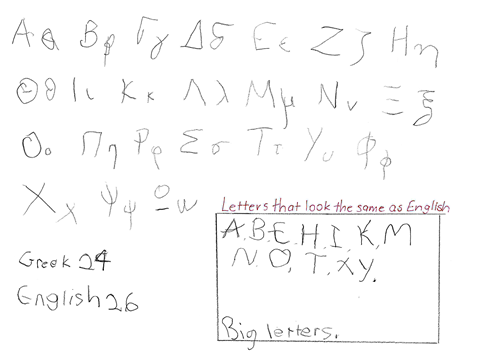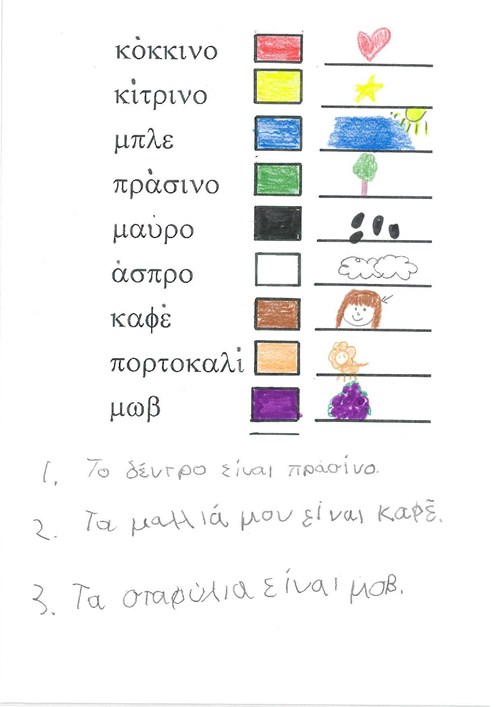Languages: Modern Greek - Satisfactory - Foundation to Year 2
Portfolio summary
This portfolio of student work shows that the student can interact with teachers and peers through action-related talk and play (WS1, WS2, WS3). The student introduces themselves and their family and exchanges greetings, farewells, and expresses thanks (WS1). The student uses simple, repetitive language when participating in shared activities and simple exchanges, responds to simple instructions and imitates frequently used classroom language (WS1, WS2, WS3). When speaking, the student reproduces distinctive sounds and letters of the Greek language (WS2, WS3). The student identifies specific words, such as names of people (WS1), places or objects (WS5), in simple spoken and written texts and responds to imaginative experiences through singing and performing (WS2). The student presents information about themselves, their family, friends, and possessions, using gestures and modelled language (WS1, WS2, WS3, WS5). The student creates simple texts, such as captions to images, using familiar words, phrases and sentence patterns (WS2, WS4, WS5, WS6). The student uses vocabulary related to their classroom and family (WS6). The student recognises questions and commands, and uses short sentences with appropriate word order, verb forms and personal pronouns to communicate about themselves, their family and classroom (WS1, WS2, WS5, WS6). The student translates frequently used words and simple phrases relating to their immediate environment, using visual cues and identifies similarities and differences (WS2, WS5, WS6). The student gives examples of ways the Greek language sounds and looks different from other languages that they bring to the classroom (WS4, WS5).
The student identifies how letters of the Greek alphabet are represented in words and reads vowel–consonant combinations (WS4, WS5). The student identifies features of familiar texts such as songs, labels and captions (WS3). The student provides examples of the different titles and greetings that are used to address people in different situations. The student lists different languages that are spoken in Australia and identifies words in English that have been borrowed from Greek and vice versa. The student identifies similarities and differences between Greek and their own language and culture (WS4).





